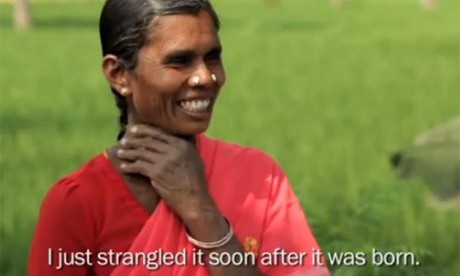In 1985, Mary Anne Warren coined the term gendercide to refer to the ritual eradication of women and girls throughout the world. More recently, the heartbreaking film It’s a Girl documents the effects of this practice on the numbers of girls and women in China and India. It makes for difficult viewing, particularly when confronted with the kinds of survivors who have internalised their worthlessness to a point where they see the infanticide of girl children as a reasonable solution to the burden of giving birth to girls.
The United Nations estimates that as many as 200 million women and girls are missing in the world today as a result of being born into societies in which they have no value. The latest figures from China show that in some parts of the country there are as many as 130 boys for every 100 girls, a ratio that has widened rather than narrowed in the past decade. In that same period, it’s estimated between 3 million to 6 million girls were aborted in India, despite the fact that sex determination tests have been outlawed there as a response to such a trend. And before you make the mistake of thinking this is due to poverty, think again – the wealthiest classes in both China and India are just as likely if not more so to dispense of their girl children because of the cultural honour of having boys.
By 2020, it’s estimated that China will have around 30-40 million more men than women. Known as the ‘bare branches syndrome‘, it describes a phenomenon in which significant proportions of the population will be unable to “bear fruit”. Simply put, with no women to marry in a culture that prizes the structure of family (albeit a one-child one in China), what will those millions of men do? There’s already evidence of increased trafficking of girls and women through China, while rural areas with even fewer options see wives being shared. To put this problem into a very tiny nutshell, the ritual gendercide of women and girls throughout the world has even more ramifications than the moral implications of devaluing humans according to biological sex. It is real, it’s happening and it’s a devastating insight into the logical endpoint of patriarchal codes that position women as property and resources rather than human beings.
So what does this have to do with Australia? Continue reading
Sources
- Clementine Ford in Daily Life
- Image: The Independent Blogs
Clementine Ford is an Australian writer with a background in feminist/social commentary.
